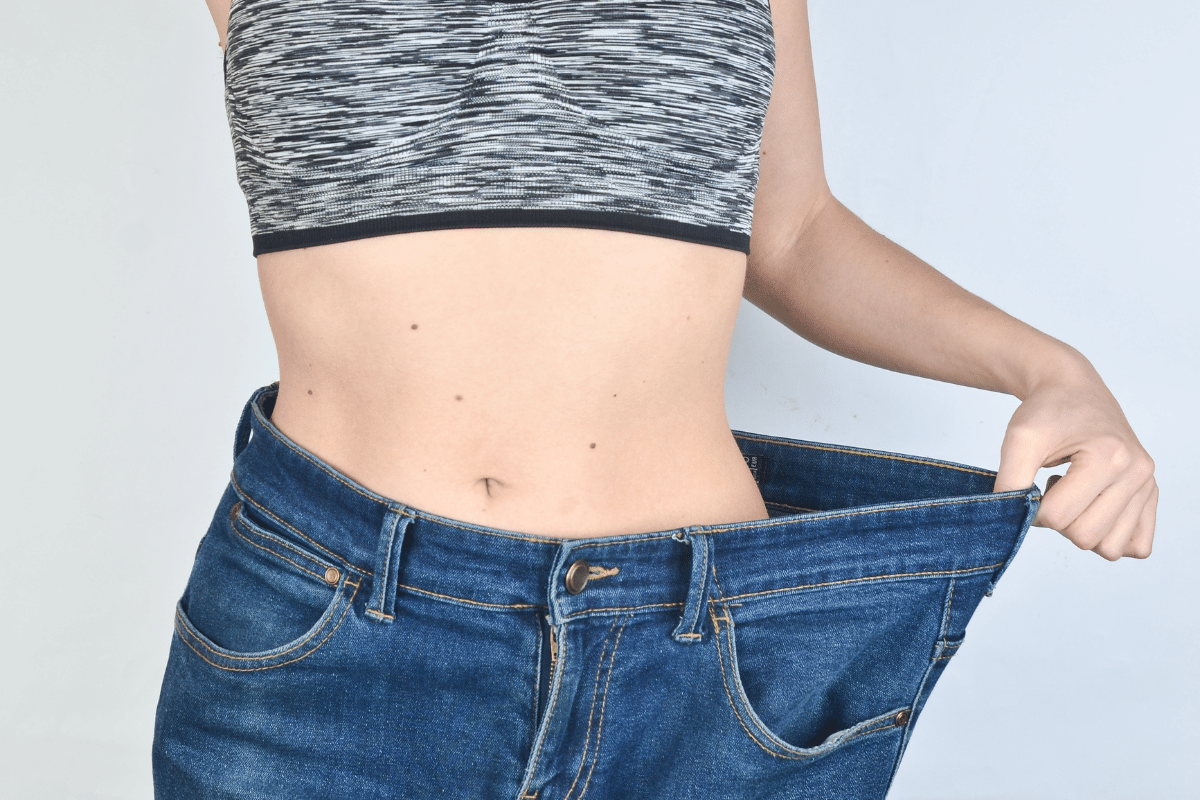The rise of keto diets and supplements has captured the interest of individuals seeking effective ways to achieve their weight loss goals and improve their overall health. Among the plethora of options available, Keto Blast Gummies have emerged as a popular choice. In this article, we will delve into the world of Keto Blast Gummies, exploring their claims, ingredients, and most importantly, the reviews from those who have tried them. It’s time to uncover the truth behind Keto Blast Gummies and provide you with the information you need to make an informed decision about their potential benefits for your keto journey.
The ketogenic diet is a low-carbohydrate, high-fat eating plan that aims to shift the body into a state of ketosis. During ketosis, the body primarily burns fat for fuel, which can lead to weight loss and other health benefits. Keto Blast Gummies are specifically formulated to support individuals following a ketogenic lifestyle. They are designed to enhance the effects of ketosis, accelerate fat burning, and provide energy while adhering to the principles of a low-carb, high-fat diet.
In this article, we will dive into the details of Keto Blast Gummies, examining their ingredients, understanding how they work, and exploring their potential effectiveness. We will also take a closer look at the reviews and experiences of those who have used Keto Blast Gummies, shedding light on both the positive aspects and any potential drawbacks. By the end, you will have a comprehensive understanding of Keto Blast Gummies and be equipped to make an informed decision about whether they are the right choice for you.
It’s important to note that individual results may vary, and it’s always recommended to consult with a healthcare professional or a registered dietitian before making any significant changes to your diet or incorporating new supplements into your routine. Now, let’s embark on this journey of uncovering the truth about Keto Blast Gummies and discovering how they can potentially support your ketogenic goals.
Understanding Keto Blast Gummies
To truly comprehend the benefits and potential impact of Keto Blast Gummies, it’s essential to delve into their composition and how they work. Let’s explore the key aspects of Keto Blast Gummies:
Keto Blast Gummies are a dietary supplement specifically formulated to support individuals following a ketogenic diet. They are designed to provide additional support for achieving and maintaining a state of ketosis, where the body utilizes stored fat as its primary source of energy.
The ingredients used in Keto Blast Gummies are carefully selected to align with the principles of a ketogenic diet. They typically include:
- BHB Salts (Beta-Hydroxybutyrate): BHB is an exogenous ketone that helps raise the level of ketones in the blood. By consuming BHB salts, such as magnesium, calcium, and sodium beta-hydroxybutyrate, the body receives an additional source of ketones. This can help accelerate the transition into ketosis and maintain ketone levels, even when carbohydrate intake is limited.
- MCT Oil (Medium-Chain Triglycerides): MCT oil is a type of healthy fat derived from coconut or palm kernel oil. It contains medium-chain fatty acids that are easily converted into ketones by the liver. Incorporating MCT oil into Keto Blast Gummies provides an immediate and efficient source of energy, supporting the body’s ketosis process.
- Other Supportive Ingredients: Depending on the brand and formulation, Keto Blast Gummies may contain additional ingredients that support the ketogenic lifestyle. These can include antioxidants, vitamins, and minerals that contribute to overall health and well-being.
Keto Blast Gummies are typically consumed as a convenient and enjoyable alternative to traditional supplements. The gummies are designed to be taken orally and can be easily incorporated into your daily routine. They provide a portable option for individuals on the go and offer a more pleasant experience compared to other supplement formats.
The primary purpose of Keto Blast Gummies is to enhance the effects of a ketogenic diet. By providing exogenous ketones and MCT oil, these gummies aim to support the body’s transition into ketosis, increase ketone levels, and provide an additional source of energy. This can potentially result in improved mental clarity, increased energy levels, and enhanced weight loss outcomes for individuals following a ketogenic lifestyle.
It’s important to note that while Keto Blast Gummies can offer support, they should be used as part of a comprehensive approach to a healthy lifestyle. They are not intended to replace a well-formulated ketogenic diet that includes a variety of whole foods and an appropriate macronutrient balance.

keto blast gummies reviews
Effectiveness of Keto Blast Gummies
When considering the effectiveness of Keto Blast Gummies, it’s important to analyze the claims made by the product and evaluate the scientific evidence supporting these claims. Let’s explore the potential benefits of Keto Blast Gummies and examine the available research:
- Supporting Ketosis: Keto Blast Gummies claim to support the state of ketosis, where the body burns fat for fuel instead of carbohydrates. The inclusion of exogenous ketones, such as BHB salts, can elevate ketone levels in the blood and potentially aid in achieving and maintaining ketosis. While there is scientific evidence supporting the role of exogenous ketones in promoting ketosis, individual responses may vary.
- Increasing Energy Levels: By providing an additional source of ketones and MCT oil, Keto Blast Gummies aim to enhance energy levels for individuals following a ketogenic lifestyle. Ketones are an efficient fuel source for the body, including the brain, and can potentially improve cognitive function and mental clarity. While some studies suggest that exogenous ketones and MCT oil may enhance energy levels, more research is needed to establish their precise impact.
- Weight Loss Support: Keto Blast Gummies are often marketed as a weight loss aid due to their potential to enhance ketosis and fat burning. While the ketogenic diet itself has been shown to promote weight loss, limited research specifically focuses on the effects of Keto Blast Gummies on weight management. It’s important to note that sustained weight loss requires a comprehensive approach that includes a well-formulated diet, regular physical activity, and adherence to a healthy lifestyle.
- Appetite Control: Some users claim that Keto Blast Gummies help reduce appetite and curb cravings, which can be beneficial for weight management. While individual experiences may vary, the inclusion of MCT oil in the gummies may promote satiety and contribute to appetite control.
It’s important to acknowledge that the research surrounding the specific effectiveness of Keto Blast Gummies as a product is limited. While the individual ingredients, such as exogenous ketones and MCT oil, have been studied in various contexts, more research is needed to determine the precise effects of Keto Blast Gummies on ketosis, weight loss, and other claimed benefits.
Moreover, individual responses to Keto Blast Gummies may vary based on factors such as metabolic differences, adherence to a ketogenic diet, and overall lifestyle choices. It’s advisable to approach any dietary supplement, including Keto Blast Gummies, with realistic expectations and to consult with a healthcare professional or a registered dietitian before incorporating them into your routine.

keto blast gummies reviews
Keto Blast Gummies Reviews: Pros and Cons
To gain a better understanding of the effectiveness of Keto Blast Gummies, it’s valuable to explore the experiences and feedback of individuals who have used the product. Here, we will highlight the positive aspects and potential drawbacks reported by users in their keto blast gummies reviews:
Pros of Keto Blast Gummies:
- Convenience: Users appreciate the convenience of Keto Blast Gummies, as they provide a portable and easy-to-consume option for supporting their ketogenic lifestyle. The gummies can be taken on-the-go, making it simple to incorporate them into daily routines.
- Taste and Enjoyment: Many users find Keto Blast Gummies to be enjoyable and tasty, which can make adhering to a supplement routine more pleasurable.
- Energy and Mental Clarity: Some users report experiencing increased energy levels and improved mental clarity after consuming Keto Blast Gummies. These benefits can be particularly beneficial during periods of low carbohydrate intake.
- Appetite Control: Several users claim that Keto Blast Gummies help reduce cravings and suppress appetite, making it easier to adhere to a ketogenic diet and manage portion sizes.
Cons of Keto Blast Gummies:
- Individual Variations: Users note that the effectiveness of Keto Blast Gummies can vary from person to person. Some individuals may experience more pronounced effects, while others may have a minimal response.
- Limited Scientific Evidence: While the individual ingredients found in Keto Blast Gummies, such as exogenous ketones and MCT oil, have some scientific support, there is limited research specifically on the product itself. Users would appreciate more studies validating the effectiveness and benefits of Keto Blast Gummies.
- Price and Affordability: Some users express concerns about the cost of Keto Blast Gummies, as they can be more expensive compared to other supplements or traditional dietary approaches. Affordability may be a factor to consider for those on a tight budget.
It’s important to approach user reviews with caution, as individual experiences can vary significantly. What works for one person may not work the same way for another. While user reviews provide valuable insights, they should not be the sole determining factor in deciding whether to incorporate Keto Blast Gummies into your routine.
By considering a variety of reviews and understanding the potential pros and cons, you can gain a more comprehensive view of the experiences others have had with Keto Blast Gummies. Ultimately, consulting with a healthcare professional or a registered dietitian can help you make an informed decision based on your individual needs and goals.

keto blast gummies reviews
Tips for Using Keto Blast Gummies
To optimize the potential benefits of Keto Blast Gummies and support your ketogenic journey, it’s important to use them effectively. Here are some tips to consider when incorporating Keto Blast Gummies into your routine:
- Follow the Recommended Dosage: Adhere to the recommended dosage provided by the manufacturer. The dosage may vary depending on the specific product and formulation. It’s crucial to follow the instructions to ensure that you are consuming the appropriate amount of Keto Blast Gummies for optimal results.
- Timing of Consumption: Consider the timing of when you consume Keto Blast Gummies. Some individuals find it beneficial to take them in the morning to kickstart ketosis and provide sustained energy throughout the day. Others prefer taking them before workouts to enhance performance. Experiment with different timings and observe how your body responds to find the most suitable schedule for your needs.
- Pair with a Ketogenic Diet: Remember that Keto Blast Gummies are meant to be a supplement to a well-formulated ketogenic diet. Focus on consuming whole, nutrient-dense foods that align with the principles of a low-carb, high-fat diet. Incorporating Keto Blast Gummies into your ketogenic lifestyle can provide an additional boost, but they should not be relied upon as a sole source of nutrition.
- Stay Consistent: Consistency is key when using Keto Blast Gummies. Incorporate them into your daily routine and follow a consistent schedule to maintain a steady supply of exogenous ketones and MCT oil. This consistency can contribute to more stable ketone levels and potentially enhance the benefits of the gummies.
- Hydrate Well: It’s important to stay hydrated when following a ketogenic diet and using Keto Blast Gummies. Drinking an adequate amount of water can support overall well-being and assist in maintaining proper bodily function. Aim to drink plenty of water throughout the day to stay hydrated and optimize the effects of the gummies.
- Monitor Your Body’s Response: Pay attention to how your body responds to Keto Blast Gummies. Observe changes in your energy levels, mental clarity, and overall well-being. It may be helpful to keep a journal or track your progress to better understand the impact of the gummies on your ketogenic journey.
Remember, individual responses to Keto Blast Gummies may vary. It’s important to listen to your body and make adjustments as needed. If you have any specific concerns or questions, it’s advisable to consult with a healthcare professional or a registered dietitian, who can provide personalized guidance based on your unique needs and circumstances.
By following these tips, you can effectively incorporate Keto Blast Gummies into your ketogenic routine and potentially maximize their benefits for your health and well-being.

keto blast gummies reviews
Frequently Asked Questions (FAQs) About Keto Blast Gummies
Here, we will address common questions and concerns regarding Keto Blast Gummies, providing accurate and helpful answers to assist you in making informed decisions:
Q1: Are Keto Blast Gummies suitable for everyone?
A1: While Keto Blast Gummies are generally safe for most individuals, it’s important to consult with a healthcare professional or a registered dietitian before incorporating them into your routine, especially if you have underlying health conditions, are taking medications, or have specific dietary needs. They can provide personalized guidance based on your individual circumstances.
Q2: Can Keto Blast Gummies replace a ketogenic diet?
A2: No, Keto Blast Gummies are intended to be a supplement to a well-formulated ketogenic diet, not a replacement. A ketogenic diet focuses on a specific macronutrient balance, emphasizing low carbohydrates, moderate protein, and high fat. While Keto Blast Gummies may enhance the effects of ketosis, they should be used in conjunction with a ketogenic diet to achieve optimal results.
Q3: Can I consume Keto Blast Gummies if I’m not following a ketogenic diet?
A3: Keto Blast Gummies are specifically formulated to support individuals following a ketogenic lifestyle. While they may provide some benefits even if you’re not following a ketogenic diet, their effects may be more pronounced when combined with a low-carb, high-fat eating plan. If you’re not following a ketogenic diet, it’s advisable to consult with a healthcare professional before incorporating Keto Blast Gummies into your routine.
Q4: Can Keto Blast Gummies help with weight loss?
A4: While Keto Blast Gummies are often marketed as a weight loss aid, it’s important to remember that sustained weight loss requires a comprehensive approach. Keto Blast Gummies may enhance ketosis and fat burning, potentially supporting weight loss efforts. However, they should be used in conjunction with a well-formulated ketogenic diet, regular physical activity, and other lifestyle factors that contribute to healthy weight management.
Q5: How long does it take to see results with Keto Blast Gummies?
A5: The time it takes to see results with Keto Blast Gummies can vary depending on various factors, including individual metabolic rate, adherence to a ketogenic diet, exercise routine, and overall lifestyle choices. Some individuals may notice changes in energy levels and mental clarity relatively quickly, while others may require more time to experience the desired effects. Consistency is key, and it’s important to give your body sufficient time to adapt and respond to the supplementation.
Q6: Are there any side effects of Keto Blast Gummies?
A6: Keto Blast Gummies are generally well-tolerated by most individuals. However, some people may experience digestive discomfort, such as bloating or mild gastrointestinal issues, when first incorporating them into their routine. These side effects are usually temporary and tend to subside as the body adapts to the gummies. If you experience any severe or persistent side effects, it’s advisable to discontinue use and consult with a healthcare professional.
Individual experiences and results may vary. If you have any specific concerns or questions, it’s advisable to consult with a healthcare professional or a registered dietitian, who can provide personalized guidance based on your unique needs and goals.
Now armed with a comprehensive understanding of Keto Blast Gummies, you can make an informed decision about whether they align with your ketogenic lifestyle and goals. Remember, the journey towards improved health and well-being is a personal one, and finding the right approach that works for you is key.
We hope this article has provided valuable insights and guidance regarding Keto Blast Gummies. Embrace your ketogenic journey with knowledge and mindfulness, and may it lead you to the desired outcomes you seek.
Related Keywords
# keto blast gummies reviews youtube
# keto gummies reviews
# keto blast gummies where to buy
# keto blast gummies ingredients
# keto blast gummy bears directions
# keto blast acv gummies
# premium blast keto gummies reviews
# are keto blast gummies safe
# how many keto blast gummies do you take a day
# walmart keto blast gummies




































